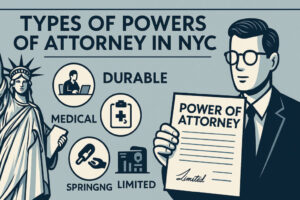When it comes to estate planning, a revocable trust is a popular option for many individuals. One of the key benefits of a revocable trust is that it allows for the seamless transfer of assets to beneficiaries upon the trust creator’s death without the need for probate. However, understanding how ownership of property works within a revocable trust can be a bit of a mystery for some. In this article, we will dive into the intricacies of ownership of property in a revocable trust and explain everything you need to know.
Understanding Revocable Trusts
Before we delve into ownership of property in a revocable trust, let’s first define what a revocable trust is. A revocable trust, also known as a living trust, is a legal entity created during the lifetime of the trust creator (also known as the grantor). The grantor transfers their assets into the trust and designates beneficiaries who will receive those assets upon their death. One key feature of a revocable trust is that the grantor retains the ability to modify or revoke the trust during their lifetime.
Ownership of Property in a Revocable Trust
When a grantor transfers property into a revocable trust, the ownership of that property is then held by the trust itself. The grantor technically no longer owns the property – instead, the trust owns it. However, the grantor retains control over the trust and can use the assets within the trust as they see fit. This means that the grantor can buy, sell, or otherwise manage the assets in the trust during their lifetime.
Beneficiaries
While the grantor retains control over the assets in the trust during their lifetime, upon their death, the assets will be transferred to the beneficiaries named in the trust document. The assets do not go through probate, which can save time and money for the beneficiaries. This seamless transfer of assets is one of the main benefits of a revocable trust.
Real Estate in a Revocable Trust
One common type of asset that is transferred into a revocable trust is real estate. When real estate is transferred into a revocable trust, the trust becomes the owner of the property. The grantor can continue to live in or use the property, but legally, the trust owns it. Upon the grantor’s death, the property will pass to the beneficiaries named in the trust document.
Benefits and Practical Tips
There are several benefits to placing property in a revocable trust, including avoiding probate, maintaining privacy (since the trust document is not public record like a will), and providing for the seamless transfer of assets to beneficiaries. Here are some practical tips for managing property in a revocable trust:
- Make sure to properly title assets in the name of the trust to ensure they are included in the trust.
- Regularly review and update the trust document to reflect any changes in assets or beneficiaries.
- Consult with a qualified estate planning attorney to ensure your trust is set up correctly and meets your specific needs.
Case Studies
Let’s look at a couple of case studies to illustrate how ownership of property in a revocable trust works in practice:
| Case Study 1 | Case Study 2 |
|---|---|
| John creates a revocable trust and transfers his home into the trust. The trust document names his children as beneficiaries. Upon John’s death, the home is transferred to his children without having to go through probate. | Emily sets up a revocable trust and transfers her investment portfolio into the trust. She continues to manage the investments during her lifetime. Upon Emily’s death, the investments are distributed to her grandchildren according to the trust document. |
Firsthand Experience
Many individuals who have utilized a revocable trust for their estate planning needs have found it to be a valuable tool for asset management and distribution. By understanding how ownership of property works within a revocable trust, individuals can ensure their assets are protected and efficiently passed on to their loved ones.
In conclusion, ownership of property in a revocable trust may seem complex, but with the right guidance and understanding, it can be a straightforward and effective way to manage assets during and after one’s lifetime. By consulting with an estate planning attorney and carefully planning the transfer of assets into a revocable trust, individuals can rest assured that their wishes will be carried out according to their intentions.
The post Unraveling the Mystery: Ownership of Property in a Revocable Trust Explained appeared first on lawyer.bet.





